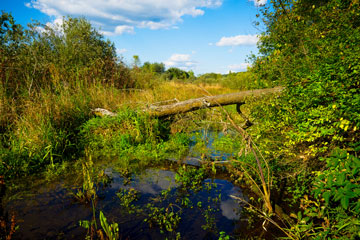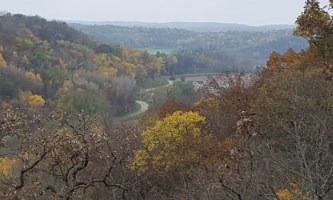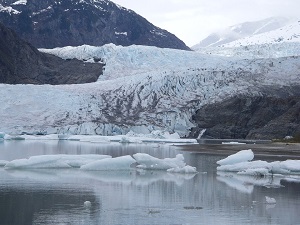|
|

A Major Redevelopment Project Takes Shape in Monona
by Hugo Gonzalez Koop, age 17
After years of planning, a major redevelopment project is taking shape in Monona. The recently approved project is getting positive feedback from residents and will start construction later this year. The $36 million improvement plan, developed by Galway Companies, will take place.
Protecting nearby water resources is an important part of the plan. According to The Capital Times, the project will cut down on storm water runoff into the Yahara River and improve the capture and treatment of sediment. It's estimated that the project will create 26,000 square feet of commercial space, 33,000 square feet of office space, and over 230 residential units by 2022, when construction will end.
[Read More]

Lodi Marsh Wildlife Area and State Natural Area Adds 58 Acres to Protected Lands in Northern Dane County
by Andréanna Wright, age 16
From wetlands to prairies, a diverse range of biomes contributes to the preservation of natural resources and wildlife in Wisconsin. Climate change, prairie loss, and deforestation have reduced some of the state’s richest sources of species diversity over the last couple of decades.
But in the midst of these bleak realities, 58 acres of wetland wildlife habitat in Dane County will now be preserved thanks to the efforts of long-time Lodi residents Lydia L O’Brien, Mary J. Thompson, and Marjorie Quam of the Miller family.
[Read More]

New Morton Forest Takes Root in Dane County
by Shreya Shrestha, age 16
Dane County Executive Joe Parisi announced recently that local benefactor Stephen Morton donated 114 acres of forestland to Dane County Parks. Located in the Black Earth/Mazomanie area, the newly-unveiled Morton Forest illuminates many scenic views including the Blue Mound, which is the biggest hill in southern Wisconsin.
“I donated my land to Dane County Parks because I felt, given our expanding population, it was important to protect open space and create quite places of solitude for people to visit as an escape from their more crowded urban environments,” said Morton.
[Read More]

Glaciers Covered Wisconsin
by Christopher Trejo, age 12
Did you know that the four lakes of Wisconsin were created by glaciers?
Glaciers are huge sheets of ice. Madison was once covered by a glacier as tall as five Capitol buildings stacked on top of each other. Each year, the glacier moved forward, pushing tons of sand and gravel, changing the landscape as it moved.
[Read More]
Proud to Support Academic Achievement in Wisconsin
Plastic and garbage can hurt many animals, including young black bears. One Wisconsin family found a bear that had its head stuck in a plastic food container at Marsh Miller Lake in Chippewa County.
[read more...]
On a warm Sunday this summer, my family and I went camping for three nights in Pattison State Park in Superior, Wisconsin to celebrate my birthday. This state park has the highest waterfall in Wisconsin, Big Manitou Falls, which is 165 feet tall. The park sits on 1,476 acres of land.
[read more...]
Cherokee Marsh is home to a variety of flora and fauna that thrive in this unique and significant ecosystem. The marsh is also a very important part of Dane County’s natural environment.
Trees are especially scarce in marshes. Instead, these wetlands boast an abundance of herbaceous plants. Common plants at Cherokee Marsh include cattails, sago pondweed, and hard stem bulrush. This site also supports several rare plant species such as glade mallow, white ladyslipper, and tufted bulrush. Many mammals, reptiles, birds, and amphibians live in the marsh.
[read more...]
The world's largest refracting telescope is located at Yerkes Observatory in Williams Bay on Lake Geneva, Wisconsin. It was used by many well-known space researchers in the past. The facility was recently donated to the Yerkes Future Foundation by the University of Chicago. The foundation has plans to refurbish the 123-year-old facility, and hope to have it open to the public as soon as spring 2021. The many refurbishments will improve research capabilities and the very structure itself.
[read more...]
Most black bears in Wisconsin are found in the central or northern parts of the state. However, people on social media have been following a black bear, known as Bruno, who has made an impressive trek from Wisconsin to Missouri in a month by himself.
[read more...]
The Midwest, especially the state of Wisconsin, is covered with thousands of ancient effigy mounds. From ground level, these mounds usually just look like small hills, but they were actually created by Native Americans hundreds of years ago. Some of these mounds are over 1,500 years old and can be over 100 meters in diameter. These mounds are usually made in the shape of an animal or human. It is believed that they were often built at the base of hills in order for the entire mound to be seen during construction.
[read more...]
The city of Stoughton is thinking about removing their dam on the Yahara River for a redesign project of the riverfront. The goal is to make it cleaner, safer, more attractive, and may also include a whitewater paddling feature.
[read more...]
Flooding isn’t one of Dane County’s biggest concerns, but there is certainly a risk.
[read more...]
Outside of the Midwest, The Upper Peninsula is by all accounts a puzzle to a significant part of the U.S. populace. Shockingly, even to the absolute midwest, it is normal to imagine that the Upper Peninsula is a piece of Canada; and some of the time course readings do not have the foggiest idea what express the Upper Peninsula is in. The vast majority accept that the Upper Peninsula is bordered by water in other locations.
[read more...]
Imagine having to campaign to keep commercial businesses from building over the cemetery your grandmother is buried in. This is a struggle that many Native Americans face today. Every day, they see their culture and what their ancestors built being taken away and destroyed.
[read more...]
Have you ever been hiking in the Madison area and seen mounds in the ground? Do you know the significance of a mound to Wisconsin’s history?
[read more...]
The S.S. Edmund Fitzgerald was one of the largest ships to ever roam North America's Great Lakes. It is also one of the most famous, and is widely known for its mysterious disappearance. The Fitzgerald is the largest ship to sink on Lake Superior.
[read more...]
Wisconsin is known for many things including dairy and fishing. Walleye is a favorite fish of tourists to Wisconsin, but unfortunately these sought-after fish are currently at risk.
[read more...]
Recently, a sandbox was installed at the Henry Vilas Zoo. But it’s not just any sandbox. It is an Augmented Reality (AR) sandbox that simulates topographic features and water systems to teach people about watersheds. The Dane County Land and Water Resources Department and the Henry Vilas Zoo partnered to construct this educational model for all ages to view.
A
watershed
is a piece of land that drains precipitation into a body of water. The exhibit at Vilas will help citizens of Madison understand how watersheds work. The model also aims to make viewers more aware of where water goes when it runs off their yards and driveways into storm drains, lakes, and streams.
[read more...]
One hot day this summer, Deney, Sarah, Josepha, drove all the way from the Free Press newsroom off West Broadway to Appleton, Wisconsin, ready to learn about space and geology. We embarked on this journey to attend the annual Wisconsin Space Grant Conference, titled “Uncharted Lands: Geology and Space.” While we were in the city, we visited the Weis Earth Science Museum to learn about fossils, rocks, and minerals.
[read more...]
Dane County recently acquired interest in 130 acres of land along the Yahara River near the Cherokee Marsh, north of Madison, for $1.5 million. Improving lake water quality and offering new recreational opportunities, this expansion of the Cherokee Marsh Natural Area Resource could benefit the Madison community.
[read more...]
El sendero del río Yahara, Yahara River Trail que es parte del sistema de parques del condado de Dane, continúa avanzando y expandiéndose. El sendero conecta el parque McDaniel en McFarland con el sendero Capital City Trail en Madison, y con la red de senderos recreativos en la parte sureste del condado de Dane.
[read more...]
The Yahara River Trail, part of the Dane County park system, continues to move forward and expand. The trail connects McDaniel Park in McFarland with the Capital City Trail in Madison. It also connects local recreational trail systems with the southeastern part of Dane County.
[read more...]
The United States Army Corps of Engineers (USACE), recently predicted that the Great Lakes water levels will rise again this spring for the fifth year in a row.
[read more...]
In rural Wisconsin, there are barns everywhere--or nearly everywhere, it seems. Most of them are red. This is no coincidence.
[read more...]
Last Thursday, I paid a visit to the Jenni and Kyle Preserve, a Dane County Park with a positive mission. Specially designed for people with disabilities, the park is fully accessible to ensure a fun outdoor experience for all.
[read more...]
After 30 years of planning, the Lower Yahara River Trail will soon be open to the public. The highly anticipated trail will connect McDaniel Park in McFarland with Capital City Trail in Madison. It does more than just bridge two places; however, it will also tie two communities together.
[read more...]
After years of planning, a major redevelopment project is taking shape in Monona. The recently approved project is getting positive feedback from residents and will start construction later this year. The $36 million improvement plan, developed by Galway Companies, will take place.
[read more...]
Recently, fellow Free Press reporters, Alex Lee, Pallav Regmi, and I went on a trip to the “oldest classroom in the Wisconsin”. The Cave of the Mounds is a national landmark located in Blue Mounds, Wisconsin. There really is a lot to learn about this million-year old cave!
[read more...]
Simpson Street, the road on which Simpson Street Free Press was established, was once a corn field and the Royal Airport. The area around Antler’s Tavern—a beloved institution—has been through many challenges, but it’s always had a strong sense of community.
[read more...]
From wetlands to prairies, a diverse range of biomes contributes to the preservation of natural resources and wildlife in Wisconsin. Climate change, prairie loss, and deforestation have reduced some of the state’s richest sources of species diversity over the last couple of decades.
[read more...]
Did you know that the four lakes of Wisconsin were created by glaciers?
Glaciers are huge sheets of ice. Madison was once covered by a glacier as tall as five Capitol buildings stacked on top of each other. Each year, the glacier moved forward, pushing tons of sand and gravel, changing the landscape as it moved.
[read more...]
Dane County Executive Joe Parisi announced recently that local benefactor Stephen Morton donated 114 acres of forestland to Dane County Parks. Located in the Black Earth/Mazomanie area, the newly-unveiled Morton Forest illuminates many scenic views including the Blue Mound, which is the biggest hill in southern Wisconsin.
[read more...]
One hundred fifty years ago master architects Samuel Donnel and August Kotzbock built a number of beautiful buildings right here in Madison. Five of these buildings still stand today in a downtown district called Mansion Hill.
[read more...]
|
|
|
|
|

